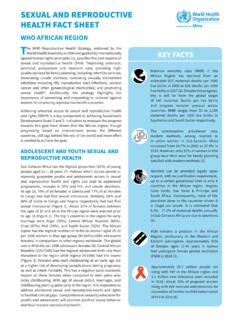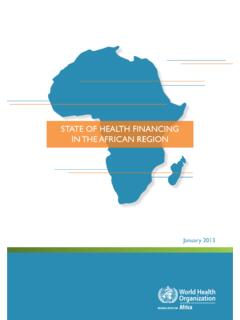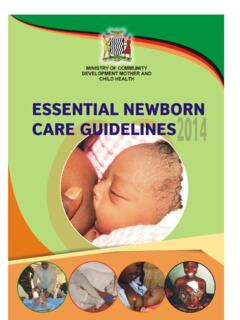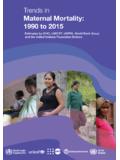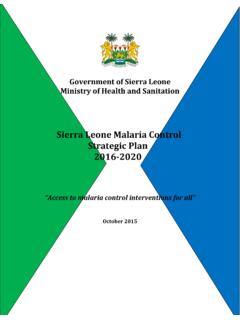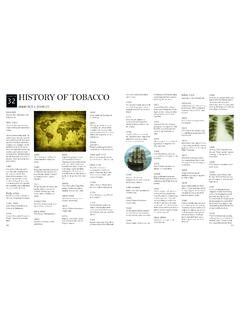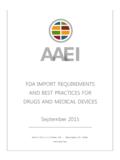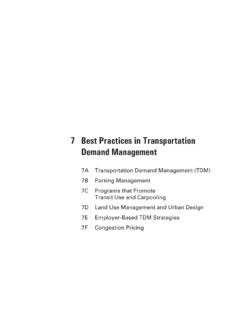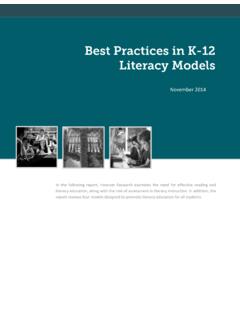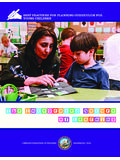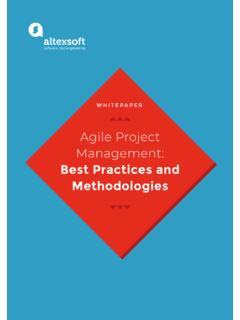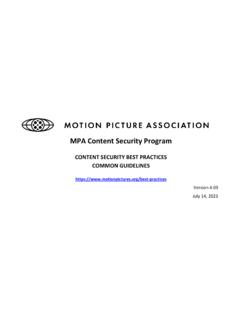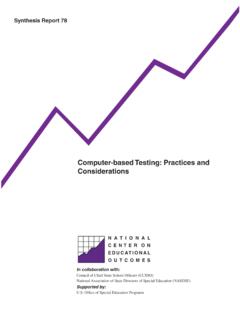Transcription of Guide for Documenting and Sharing “Best Practices”
1 In Health Programmes best practices Guide for Documenting and Sharing Guide for Documenting and Sharing best practices in Health ProgrammesWORLD HEALTH ORGANIZATIONR egional Office for AfricaBrazzaville 2008 AFRO Library Cataloguing-in-Publication DataGuide for Documenting and Sharing best practices in Health Programmes1. Practice Guideline2. Managed Care Programs3. Information Management4. Health Services Accessibility5. Health Systems Plans6. Africa ISBN : 92 9 023 132 7 (NLM Classification: W 84 HA1 ) WHO Regional Office for Africa, 2008 Publications of the World Health Organization enjoy copyright protection in accordance with the provisions of Protocol 2 of the Universal Copyright Convention.
2 All rights reserved. Copies of this publication may be obtained from the Publication and Language Services Unit, WHO Regional Office for Africa, Box 6, Brazzaville, Republic of Congo (Tel: +47 241 39100; Fax: +47 241 39507; E-mail: Requests for permission to reproduce or translate this publication whether for sale or for non-commercial distribution should be sent to the same designations employed and the presentation of the material in this publication do not imply the expression of any opinion whatsoever on the part of the World Health Organization concerning the legal status of any country, territory, city or area or of its authorities, or concerning the delimitation of its frontiers or boundaries.)
3 Dotted lines on maps represent approximate border lines for which there may not yet be full mention of specific companies or of certain manufacturers products does not imply that they are endorsed or recommended by the World Health Organization in preference to others of a similar nature that are not mentioned. Errors and omissions excepted, the names of proprietary products are distinguished by initial capital reasonable precautions have been taken by the World Health Organization to verify the information contained in this publication. However, the published material is being distributed without warranty of any kind, either express or implied.
4 The responsibility for the interpretation and use of the material lies with the reader. In no event shall the World Health Organization or its Regional Office for Africa be liable for damages arising from its in India Paragraphs1. INTRODUCTION 1 52. WHAT IS A best PRACTICE ? 6 83. EXAMPLES OF best practices 9 134. WHERE DO best practices COME FROM? 14 155. PROCEDURES FOR IDENTIFYING AND Documenting 16 23 best practices Criteria for Selection of best practices 16 17 Documenting best practices 18 20 Submitting a Proposed best Practice 21 236. DISSEMINATING AND Sharing best practices 24 287.
5 CONCLUSION 29 ANNEXES Page1. best Practice Submission Form 82. Terms of Reference of the WHO Regional Office Working Group 9 on best practices CONTENTS11 Knowledge management in the WHO African Region: Strategic Directions; and resolution AFR/RC56/16 and AFR/RC56/R8. 1. INTRODUCTION1. One of the five core functions of WHO is shaping the research agenda, and stimulating the generation, dissemination and application of knowledge . This function underscores the importance of knowledge for formulating health strategies at both national and global levels and for the efficiency of health systems performance.
6 In addition, populations need access to reliable information and knowledge on health risks and how to avoid them. WHO recognizes the importance of knowledge management methods and tools in the performance of this core function in order to improve effectiveness and The WHO Regional Committee for Africa at its fifty-sixth Session in 2006 adopted strategic directions and a related resolution on Knowledge Management (KM).1 The strate-gic directions seek to contribute to the improvement of health system performance and outcomes through effective KM in health . The resolution recognizes that KM is all about providing the right knowledge for the right people (policy-makers, practitioners, health sys-tems managers and the general public) and in the right format in order to strengthen health systems and improve health outcomes.
7 3. One of the specific objectives of the strategic directions is to maximize the impact of explicit and tacit knowledge, including health research and experiential knowledge, through effective knowledge Sharing and application . That will enable countries to benefit tremendously from exchanging experience and hard-won solutions with one another. 4. However, one of the significant barriers to knowledge Sharing and reapplication of experience is the limited culture of information and knowledge documentation and Sharing . Although relevant knowledge may exist in people s minds, it cannot always be tapped or may exist in formats that hamper people s ability to know it or find it.
8 The foregoing underscores the need for decision makers, health professionals, communities, and indeed WHO staff to be able to find, use and share knowledge on experiences of what works and the lessons In light of the above, the WHO Regional Office for Africa will be disseminating a se-ries of country experiences in the planning, implementation and monitoring of health pro-grammes and services that can be considered as best practices . This document provides guidance to WHO staff, ministries of health and civil society organizations on the process for identifying, Documenting and Sharing knowledge on these experiences that can contribute to the acceleration and expansion of health sector UNAIDS best Practice WHAT IS A best PRACTICE ?
9 6. A best Practice is commonly defined as a technique or methodology that, through experience and research, has proven reliably to lead to a desired The term is used frequently in areas such as health, government administration, the education system, project management, and others. In the context of health programmes and services, a practical definition of a best Practice is knowledge about what works in specific situations and contexts, without using inordinate resources to achieve the desired results, and which can be used to develop and implement solutions adapted to similar health problems in other situations and contexts.
10 7. The use of the word best should not be considered in the superlative sense. In other words, the term best Practice is not about perfection , the gold standard or only ele-ments that have been shown to contribute towards making interventions work or Results can be partial and may be related to only one or more components of the prac-tice being considered. Indeed, Documenting and applying lessons learned on what does not work and why it does not work is an integral part of best Practice so that the same types of mistakes can be avoided by other programmes and There are several creative and constructive actions by people and organizations in the health sector to improve health outcomes of people.

